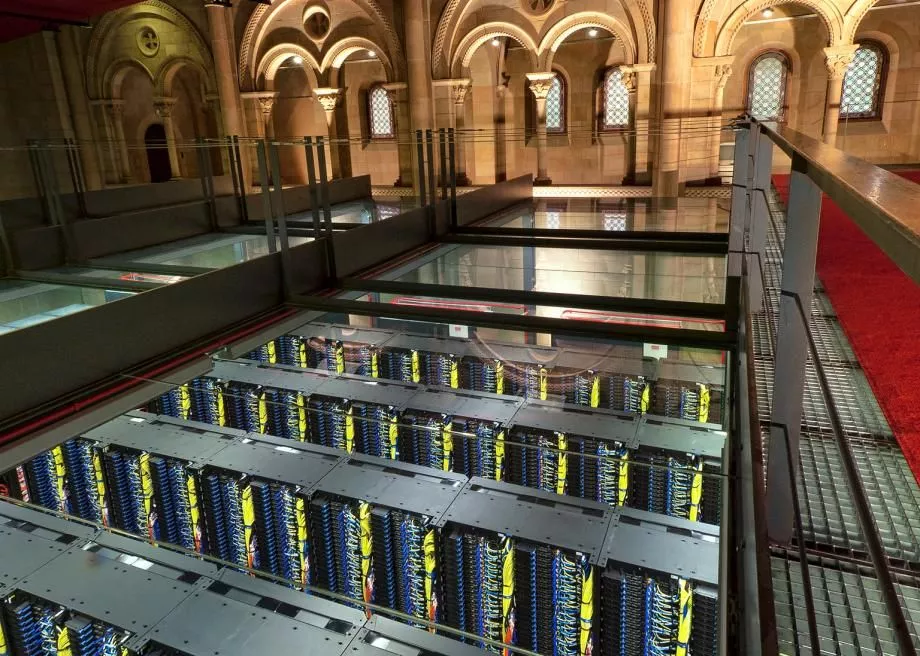Nvidia’s Grace superchip caused a stir when it was first revealed earlier this year because it promised a supercharged Arm-based device that may threaten Intel and AMD’s x86 dominance in the High-Performance Computing (HPC) industry. According to HPC Wire, the company has been awarded a $160 million (€151 million) contract to supply supercomputing hardware brains and brawn for one of EuroHPC’s supercomputing projects. The MareNostrum 5 (MareNostrum loosely translates to “our sea”) will be deployed and operational in 2023 at Spain’s Barcelona Supercomputing Centre (BSC).
MareNostrum 5 is part of the EuroHPC JU project and will have a peak performance of 314 petaflops of FP 64 computing power, as well as 200 petabytes of in-access storage and 400 petabytes of cold storage. The 200 Petabyte node is expected to be kept in a fast, NAND-based storage subsystem, following trends in HPC architecture design and other EuroHPC projects, while the cold storage node (also known as active storage, referring to data that is important but not frequently accessed) will likely use more cost-effective, traditional HDD topologies.
MareNostrum 5 will combine Nvidia’s H100 (Hopper) discrete GPU accelerators (each with 80 billion transistors, 80 GB of HBM3 memory, and 3.2 TB/s bandwidth) in tandem with dual-chip versions of the company’s 144-core, Arm-based Grace “superchips.”


As a result, MareNostrum 5 is planned to produce over 18 Exaflops of AI acceleration (FP8 8-bit floating-point operations), making it the fastest AI supercomputer in the European Union. Apart from chip technology, Nvidia’s Quantum-2 (aka NDR) InfiniBand software-defined networking(opens in new tab) uses the company’s BlueField data processing units (DPU) to keep all components talking at low latency with a high throughput of 400 GB/s, similar to Cray’s Slingshot interconnect performance.
“The acquisition of MareNostrum 5 will enable world-changing scientific breakthroughs such as the creation of digital twins to help solve global challenges like climate change and the advancement of precision medicine,” said Mateo Valero, director of BSC. “In addition, [BSC] is committed to developing European hardware to be used in future generations of supercomputers and helping to achieve technological sovereignty for the EU’s member states.”
MareNostrum 5 will also be entirely powered by renewable energies, with any extra heat being recovered rather than being wasted, as is the case with the next generation of supercomputers currently being built around Europe.
Also Read:
APPLE M1 MAX MAC STUDIO VS M1 MAX MACBOOK PRO 16: WHO WINS?


